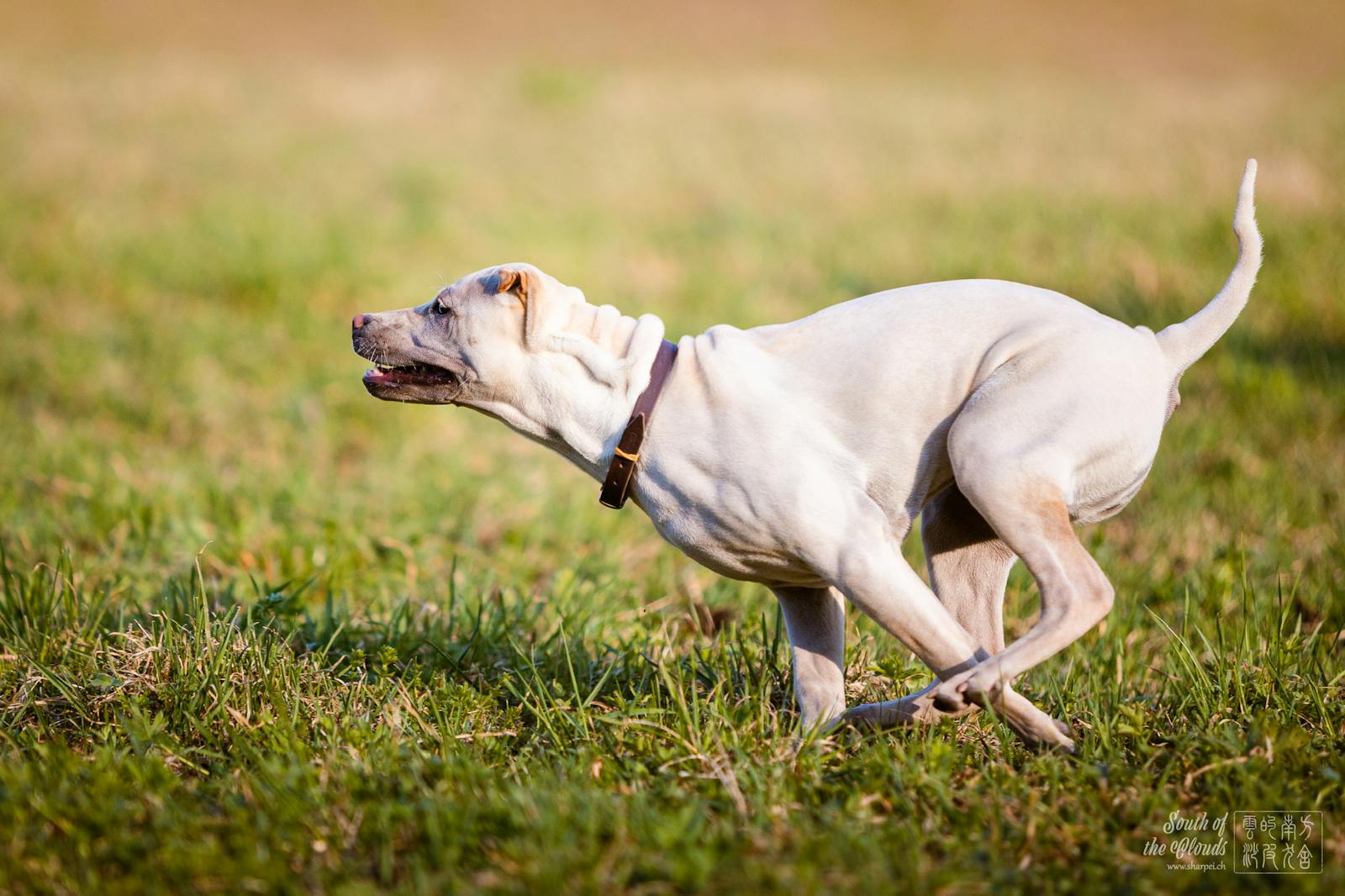Assessment of hip dysplasia
Motivation
Until I received Diting's first official hip dysplasia (HD) evaluation, my knowledge of HD was sketchy at best. After I got Panhu's results a while later, I started to deal intensively with the topic. Both dogs were officially evaluated in Switzerland with identical results. Right grade B, left grade C.
The orthopaedist at the veterinary clinic in Austria, who took the underlying X-rays, probably gave me the basic motivation to deal intensively with the subject with his statement "The Swiss evaluation is more strictly compared to Austria and Germany".
It was absolutely not about sugarcoating the results, I wanted to understand the topic, because I want to breed healthy dogs that do not run the risk of running into any foreseeable health problems.
Hip dysplasia
Hip dysplasia is a hereditary malformation of the hip joints that can lead to severe arthrosis and thus to chronic pain. HD is a genetic disposition disease, which means that the dog inherits the disposition to HD and then becomes ill if it is exposed to additional stressful environmental influences.(1)
Joint “looseness” is a primary risk factor for developing hip dysplasia. This looseness is the result of stress on a ligament in the joint that attaches the head of the femur to the wall of the hip socket. If this ligament is damaged, the round femoral head will not be held firmly in the socket of the hip joint. Because normal hip development is a response to the biomechanical forces on the hip socket during puppy growth, abnormal position of the femoral head in the hip socket can result in damage to the socket rim and the development of hip dysplasia. Proper development of the hip joint is critically dependent on the femoral head being properly centered in the hip socket. (2)
Heritability
In population genetics, heritability is defined as the "proportion of the genetic variation of a trait in the phenotypic variation of that trait in a population". (1) This can be determined by the so-called heritability coefficient. The value is always between 0.0 and 1.0. The lower the value, the lower the proportion of genes and the higher the proportion of environmental influences.
This value is based on a mean in a population. Also related to the HD, there are different average values for the different breeds. For the Shar Pei, the heritability coefficient is 0.26. (3) This value differs slightly because there are different HD evaluation methods.
Evaluation procedures
There are several different evaluation methods. The German HD evaluation according to FCI, the British HD evaluation according to BVA/KC, the North American HD evaluation according to OFA and the Swiss HD evaluation according to Flückiger. Gutmann (3) describes, compares and criticizes all evaluation methods in detail and in a very understandable way, so that I do not have to explain them further.
Another procedure is PennHip (Pennsylvania Hip Improvement Program). This is a special X-ray procedure that allows a puppy to be statistically determined from the 16th week of its life as to whether the dog will develop HD and thus osteoarthritis of the hip later in life. (5)
Since HD is a genetic disposition disease, early diagnosis can be very helpful, since a potentially high-risk dog can be offered correspondingly more favorable environmental conditions.
Selection
Since animal breeding is not just about one trait after a breeding animal is selected, you have to weigh them up. In most breeding associations, selection is based on minimum performance. There is a limit value for each trait which, if exceeded, leads to exclusion from breeding. (1) In terms of population genetics, this method does not make particularly good sense, since it fails in the implementation due to breeders and breeding clubs who, for different reasons, do not succeed in enforcing a breeding ban for carriers of the trait.
Index selection is predominantly used in livestock and zoo animal breeding. Here, all traits are considered, evaluated and weighted differently. Likewise, heritability is included, low heritability is weighted higher than high heritability. Here, the genetic diversity is less reduced.
Conclusion
Today we are aware of many potential health problems (traits) in the Shar Pei, for some of which there are already various tests and examination options. The heritability of these traits also differs, so they should be scored differently. And even if the evaluation of these traits is usually carried out by experts (laboratories, official HD/ED assessors), they are then often attempted to be interpreted and evaluated by laypeople who, when asked, do not know the various heritability values, nor how these are evaluated in the breeding selection. And a layman doesn't have to know that either, that would certainly be asking too much. But a layman must be able to trust his breeder, that he is familiar with the subject and, in the best case, with the help of scientific experts, makes a breed selection that includes modern scientific knowledge, that makes sense in terms of population genetics and the result, i.e. the puppies that have emerged or are emerging , will also be scientifically evaluated in the future.
This is what responsible breeding means to me.
Source index
- Sommerfeld-Stur, I. (2016) Rassehundezucht, Müller-Rüschlikon, Stuttgart, p. 239, 50, 212ff
- Do your puppies have enough traction in the whelping box?
(Beuchat, C. 2020) - Validierung der Auswertungsmethoden für Hüftgelenksdyspalsie beim Hund aus genetischer Sicht
(Gutmann, M. - 2003) - Untersuchungen zur Validierung von Detailinformationen der verschiedenen HD-Auswertungsmethoden als Züchtungsinformation für die Zuchtwertschätzung zur Bekämpfung der Hüftgelenksdysplasie (HD)
(Beuing, R.) - HD-Grenzfälle besser beurteilen
(Prof. Dr. Andrea Meyer-Lindenberg, Dr. Andreas Brühschwein, Julius Klever - 2015)

